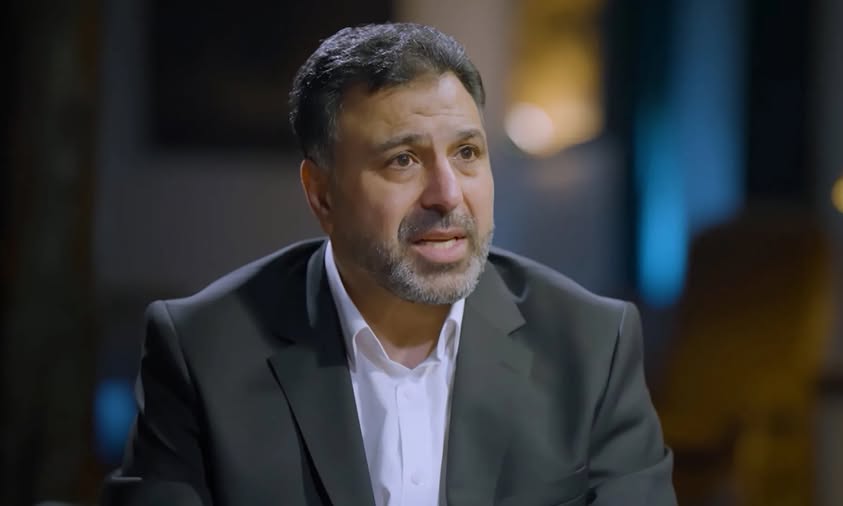The Caesar Act, a landmark piece of U.S. legislation imposing sanctions on the Syrian regime, has remained a critical tool in Washington’s policy toward Syria. Now, with the shifting political landscape in Syria and ongoing debates over sanctions relief, questions are arising about the future of the Act and its broader implications.
In an exclusive interview, Matt Zweig, a former Senior Professional Staff Member of the House Foreign Affairs Committee and one of the key figures involved in the legislation’s drafting, shared insights into the law’s origins, objectives, and potential next steps.
How the Caesar Act Came to Be
The Caesar Act was conceived during the height of the Syrian conflict, particularly amid the siege of Aleppo in 2016. It built upon earlier sanctions, such as the Syrian Accountability and Lebanese Sovereignty Restoration Act, which primarily targeted the regime for its support of insurgents and terrorist groups in Iraq.
Zweig explained that the initiative had strong bipartisan backing from the beginning. “The ultimate authors were Eliot Engel (D-NY) and Ed Royce (R-CA),” he said. “They set the objectives, and our job as staffers was to translate those into a fully operational legal framework.” The primary directive, he noted, was straightforward: increase sanctions pressure on Assad and his enablers.
The Act’s Goals: Regime Collapse or Behavioral Change?
A key question surrounding the Act has been whether it was designed to force regime change or compel Assad to alter his policies. Zweig clarified that the intention was not outright regime change but rather a shift in behavior.
“The objective was clearly spelled out: isolate the regime and target its facilitators and enablers,” he explained. “At the same time, it was meant to support the political process outlined in UN Security Council Resolution 2254.” The Act’s sanctions targeted individuals, businesses, and foreign governments backing Assad’s military and financial networks, particularly in sectors critical to its war capabilities—construction, engineering, and military procurement.
The Act also outlined criteria for suspending sanctions, including ensuring that:
– Syrian and Russian airspace is not used for targeting civilians.
– Humanitarian aid reaches besieged areas.
– Political prisoners are released.
– The regime stops attacks on medical facilities, schools, and civilian areas.
– Syria complies with international treaties on weapons.
– Displaced Syrians can return safely and voluntarily.
Yet, years after the Act’s passage, some of these conditions remain unmet, keeping the sanctions in place.
Arab Normalization and the Caesar Act’s Role
With some Arab nations attempting to restore diplomatic ties with Syria, particularly since 2018, the Caesar Act has acted as a limiting factor on how far normalization efforts can go. Zweig agreed that the Act effectively set a ceiling on normalization.
“The Act made normalization politically risky for other countries,” he explained. “Even if the executive branch remains neutral, Congress has institutional memory, meaning its stance is far more stable than changing administrations.” Additionally, secondary sanctions—which penalize non-U.S. entities for engaging with sanctioned individuals—have discouraged foreign businesses, except for Russian and Iranian companies, from re-entering the Syrian market.
Could the Caesar Act Be Lifted?
With the Assad regime no longer in power, some argue that the Act has served its purpose and should be lifted. Zweig acknowledged that it’s a complex issue.
“You can’t just remove the Act entirely, but you can suspend its enforcement,” he noted. The two mechanisms for lifting sanctions are:
- Waivers for specific individuals and entities—handled by the State Department and Treasury Department.
- Wholesale suspension—which would require a presidential certification to Congress stating that the original justification for the Act no longer applies.
However, not all conditions have been met. Key unresolved issues include:
– Ensuring the safe and voluntary return of refugees.
– Transitional justice and accountability for war crimes.
Additionally, the presence of U.S. and UN-designated terrorist organizations in Syria presents another legal hurdle. “You have an FTO (Foreign Terrorist Organization) and SDGT (Specially Designated Global Terrorist) at the top of the transitional government. That complicates things significantly,” Zweig noted.
A Shift in Focus: Beyond Sanctions
Rather than centering the conversation solely on lifting sanctions, Zweig emphasized the importance of developing mechanisms to grant Syrians access to capital while mitigating terrorism financing risks.
“This is a new era,” he said. “We need to ensure financial access through creative solutions, such as offshore lending facilities for SMEs (Small and Medium Enterprises). The conversation needs to shift toward ensuring Syrian economic activity can resume without enabling illicit finance.”
The Future of U.S. Sanctions Policy on Syria
Looking ahead, Zweig believes the U.S. must clearly communicate its expectations for sanctions relief and ensure that decisions are made with full coordination between domestic and international partners. He noted that the Trump administration is still settling into its second term, and its approach to sanctions relief remains unclear.
For now, the fate of the Caesar Act hangs in the balance, caught between its original intent, ongoing political realities, and the evolving situation in Syria. Whether it remains in place or is gradually lifted will depend on how quickly Syria’s new leadership meets the conditions for suspension—and how the Biden administration chooses to navigate this complex diplomatic challenge.
This article was translated and edited by The Syrian Observer. The Syrian Observer has not verified the content of this story. Responsibility for the information and views set out in this article lies entirely with the author.


